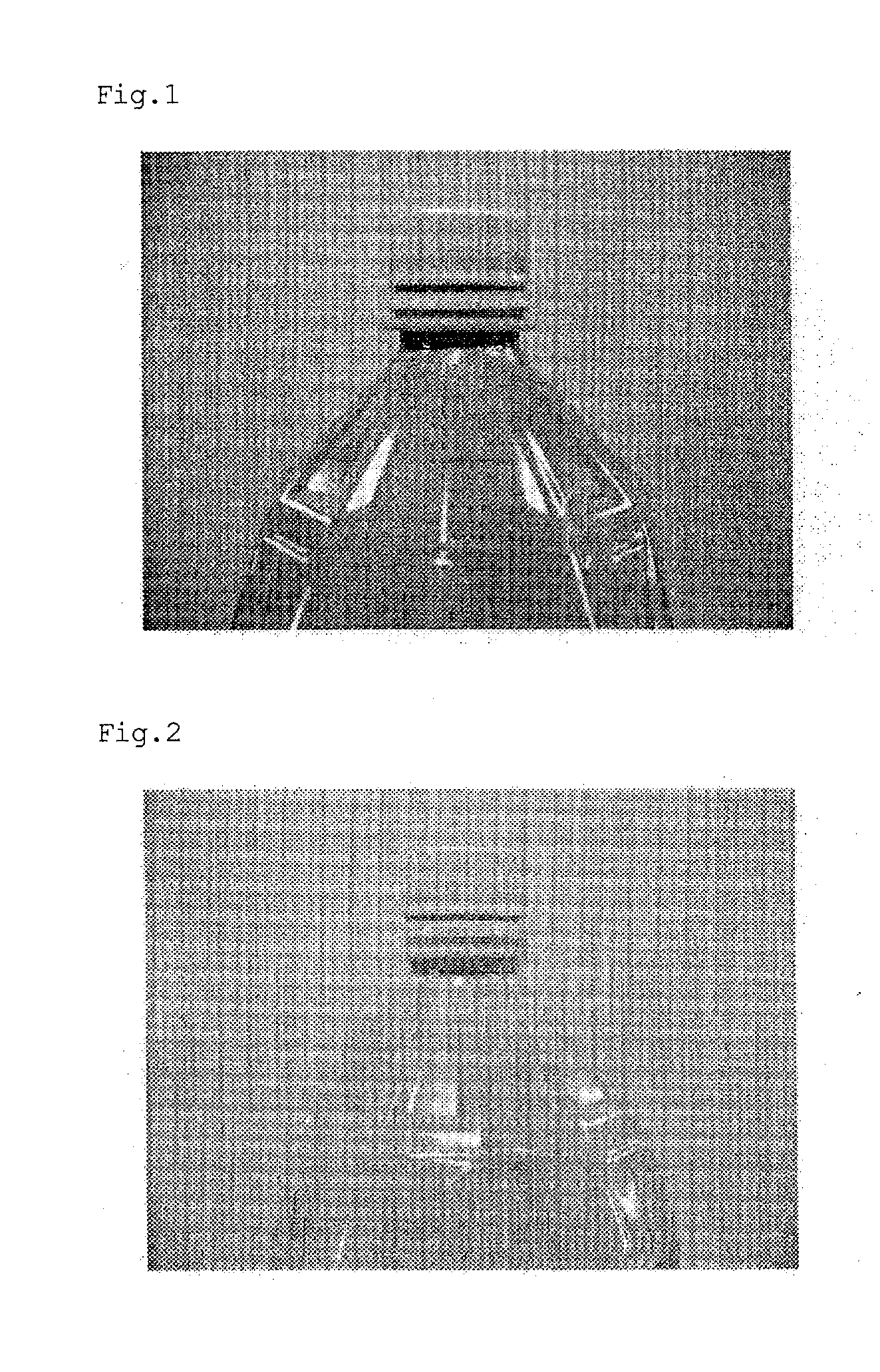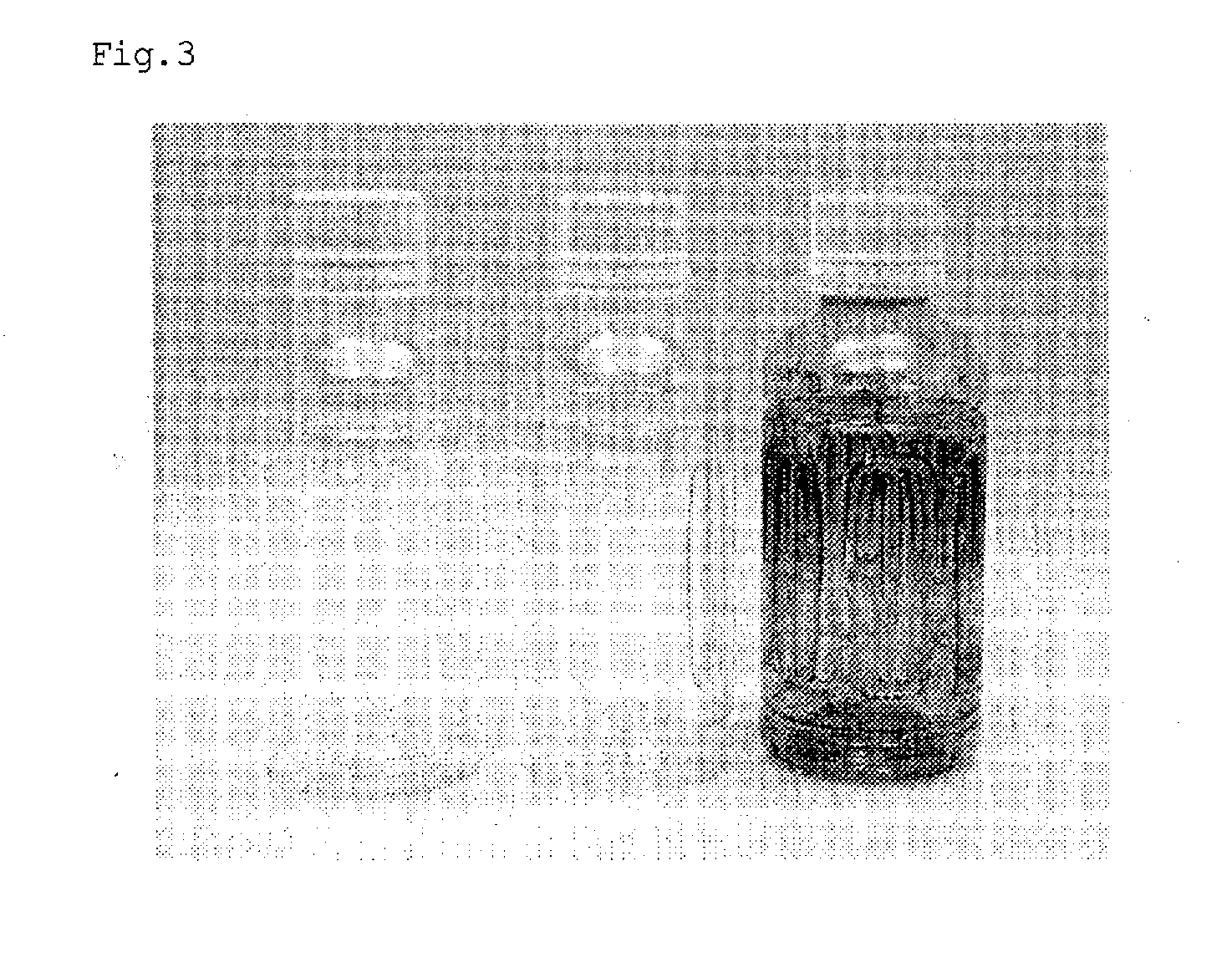Method for preventing carotenoid pigment from adhering to container
a carotenoid pigment and container technology, applied in the field of preventing the adhesion of carotenoid pigments to containers, can solve the problems of oil-soluble carotenoid pigments emulsifying into beverages, adding directly to foods, separation of oils or color changes, etc., to achieve the effect of reducing the adhesion amount of carotenoid pigments, preventing the adhesion of carotenoid pigments, and increasing the intake amount of carotenoid pigmen
- Summary
- Abstract
- Description
- Claims
- Application Information
AI Technical Summary
Benefits of technology
Problems solved by technology
Method used
Image
Examples
example 8
[0056]25 g of crystalline β-carotene was added to 225 g of propylene glycol and mixed. The mixture was ground for one hour using a wet-type grinder (Dyno-Mill, manufactured by Willy A. Bachofen AG Maschinenfabrik) to produce a ground crystalline carotene product. 150 g of gum ghatti RD (manufactured by San-Ei Gen F.F.I., Inc.) was added to 750 g of water, dissolved by heating to 90° C., and then cooled. 100 g of ground crystalline carotene product was added thereto, and the resulting mixture was subjected to dispersion-homogenization at 350 kg / cm2 using a high-pressure homogenizer to produce the preparation of Example 8. The particle size distribution of the preparation of Example 8 was measured with a laser diffraction particle size analyzer (SALD-2100, manufactured by Shimadzu Corporation), and a result of 0.45 μm was found. The β-carotene content was 1% by mass.
example 9
[0059]150 g of gum ghatti RD (manufactured by San-Ei Gen F.F.I., Inc.) was added to 700 g of water, dissolved by heating to 90° C., and then cooled. A mixture of 50 g of haematococcus algae pigment (astaxanthin content: 10% by mass) and 100 g of medium-chain triglyceride was added thereto, followed by mixing at 5000 rpm for five minutes using a stirrer. The resulting liquid was emulsified three times at 350 kg / cm2 using a high-pressure homogenizer to produce an emulsified composition (Example 9). The particle size distribution of the preparation of Example 9 was measured with a laser diffraction particle size analyzer (Microtrac MT-3000II, manufactured by Microtrac Inc.), and a result of 0.55 μm was found. The astaxanthin content was 0.5% by mass.
example 10
Preparation of Liquid Seasoning
Carotenoid Pigment-Containing Preparation
[0078]Preparation method: 300 g of paprika pigment (Paprika Oleoresin No. 44489, manufactured by San-Ei Gen F.F.I., Inc.) was mixed with a solution obtained by blending and dissolving 150 g of gum ghatti (Gum Ghatti RD, manufactured by San-Ei Gen F.F.I., Inc.) in 550 g of water. The resulting mixture was subjected to emulsification at 350 kg / cm2 using a high-pressure homogenizer to produce a carotenoid pigment-containing preparation. The particle size distribution of the carotenoid pigment-containing preparation was measured with a laser diffraction particle size analyzer (Microtrac MT-3000II, manufactured by Microtrac Inc.), and a result of 0.85 μm was found. The color density was 30000 CV.
PUM
 Login to View More
Login to View More Abstract
Description
Claims
Application Information
 Login to View More
Login to View More - R&D
- Intellectual Property
- Life Sciences
- Materials
- Tech Scout
- Unparalleled Data Quality
- Higher Quality Content
- 60% Fewer Hallucinations
Browse by: Latest US Patents, China's latest patents, Technical Efficacy Thesaurus, Application Domain, Technology Topic, Popular Technical Reports.
© 2025 PatSnap. All rights reserved.Legal|Privacy policy|Modern Slavery Act Transparency Statement|Sitemap|About US| Contact US: help@patsnap.com


